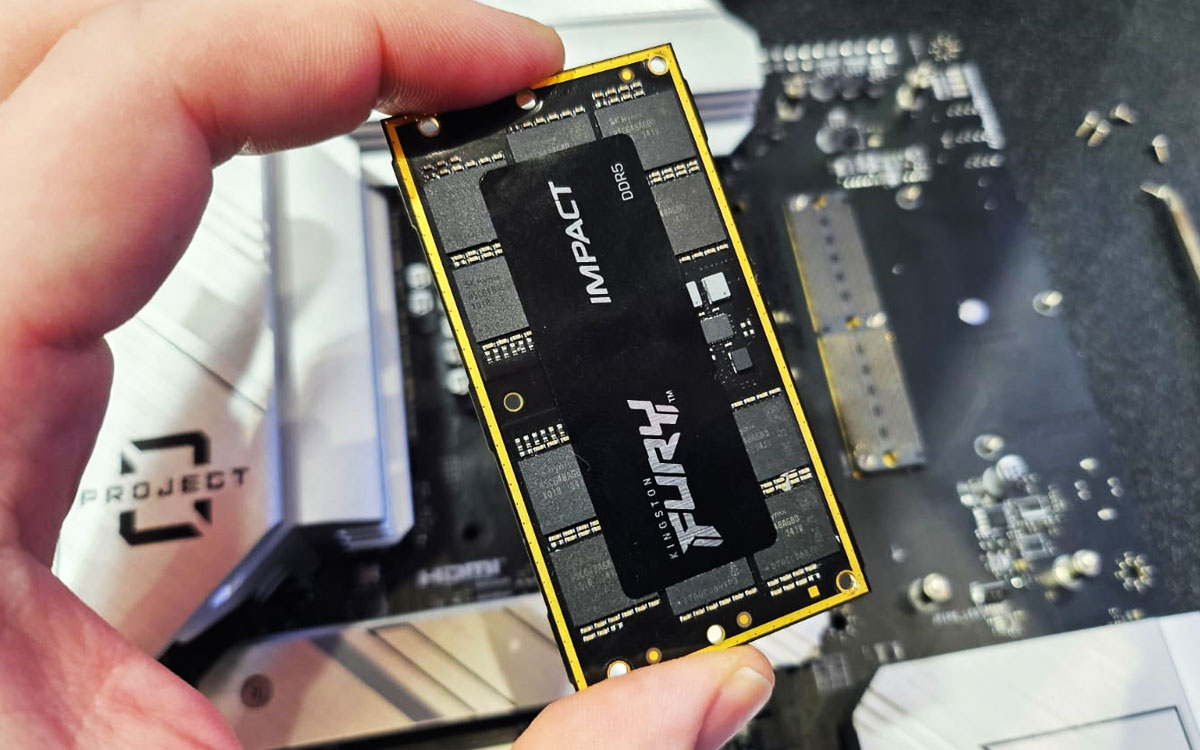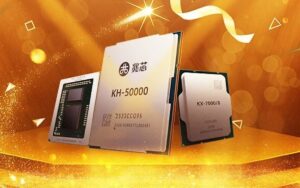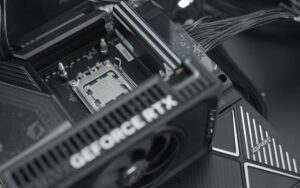
During our coverage of Computex 2024 we get to know new memories up close CAMM2with the Kingston being one of the pioneering companies in the new format that arrives in the DDR5 standard for desktop and notebook.
In this publication I show in detail the new format, which changes completely when compared to the traditional standard. CAMM2 memories are based on a single module, that is, the single-channel is over, and the module already has the number of memories in a dual-channel system, or even more channels depending on the module and platform.
CAMM2 will have a single dual-channel module with a capacity of up to 128GB
Another new feature is that the modules connected in a vertical socket change to a new module that “lays” on the board connection, as you can see in the image below. The first motherboards supporting the new standard will be based on Intel Z890 chipsets (socket LGA-1851) for Arrow Lake-S processors.

It is important to highlight that the initial project consists of two formats, CAMM2 and LPCAMM2, for desktop and notebooks respectively.
Main characteristics of CAMM2 memories
- New CAMM2 (desktop) and LPCAMM2 (notebook) formats
- Only DDR5 standard and higher
- Modules with up to 128GB at first
- Shorter tracks on your PCB, improving speed and timings
- Horizontal connection system at the base of the plate and fastening with screws
- Initial support on Intel Z890 motherboards for Arrow Lake-S processors
- Channels (dual-channel) integrated even in a single module

Considerations about the CAMM2 standard
Initially, what draws attention is precisely the format that radically changes what we know from the DIMM standard used on desktops. Maybe different formats will appear in the future, keeping the connector at the bottom as standard, which is the most important for PCB compatibility.
It will not be necessary to have two modules to support dual-channel, nor four modules to achieve a larger amount of memories as is the case today, which is both good and bad.
Putting everything in a single module is very good, and not so good either.

Good because memories have always been a computer’s Achilles heelcertainly the component that presents the most problems with incompatibilities, malfunctions, etc. and, In this case, less is more in my opinion, much more.
The downside will be on upgradesforcing you to exchange the module for a new one when you want more memory or higher speed than the current one.
It is also worth highlighting that this more compact format improves the space issue, especially on desktops (but do you need space on desktops?) where the current DIMM standard is much larger. In notebooks the biggest difference will be in the number of modules, with a good reduction as well since a single module will play the role of the current two.
SSDs have shrunk from the 2.5-inch standard to M.2, and now memories want to shrink too.
In most cases, this change in space doesn’t make any difference and doesn’t even make sense, after all, there is no shortage of space inside most cases as I mentioned, but as it is a single connection standard, think of something more compact, such as for small systems. with Mini-ITX mainboards, it seems to be interesting, and then comes that comment I mentioned above, perhaps formats of the exact size of the connector will appear for cases of ultra-compact solutions.
Remember that the market reduced the size of 2.5-inch SSDs to M.2 models seeking optimizations in this sense, and memories now fall into this concept as well.

Bad because it’s a new format? I do not see a problem Because this standard will appear slowly and on specific motherboards, it will not be a standard imposed on all models. I think what bothers most about the format is the need to change the module when you want to increase the amount of memory.
The first supported models should start to appear with Intel Z890 mainboards as we saw at Computex, the same ones used for the photos in this article. It won’t be all models, of course, but companies should start testing the market.
As CAMM2 memories are just beginning to appear, it will still take a long time for the market and consumers to adopt them en masse, so I don’t think it’s necessary to worry too much about them yet. Remember, M.2 SSDs started to appear on Intel Z67 / Z77 cards still in SATA standard, but they only gained strength even with NVMe, around 2, 3 years later, and in that case, we are talking about a component that the market I really wanted to promote, which were SSDs. I don’t know if memories have that appeal… do they?
What would I like to change about memories?
One of the biggest memory problems is that their Intel XMP and AMD EXPO profiles do not load automatically, I think this is a very big problem, because many users do not have the knowledge to enter the BIOS and activate the profile, they do not even know how fast their memories run and They often paid for something more than they needed, and still don’t use it.
So I think that making profiles load automatically in the best possible scenario would be a good update.
Will it be easier for the user with the XMP and EXPO profiles loading automatically? We do not know yet!
Incompatibility between motherboards and memories is also a serious issue. It’s unbelievable how even memories with a frequency just above the standard sometimes simply don’t boot at the highest frequency on some mainboards, not to mention when the PC doesn’t turn on and we have to simply remove and replace the modules or just change the slot on the board – mother to work, who never?
Anyway, what I would like to see are improvements in how they work, and I’m not even asking for much: I just wanted logical improvements. If it is 6000MHz (MT/s), it should work at that speed as soon as it is connected to the system. And stop crashing and causing problems in the system. Is it too much to ask? 😏🤨😁
If you want to know more, see our article on CAMM2 memories by clicking here.
Source: https://www.adrenaline.com.br/artigos/memorias-camm2-novidades/


